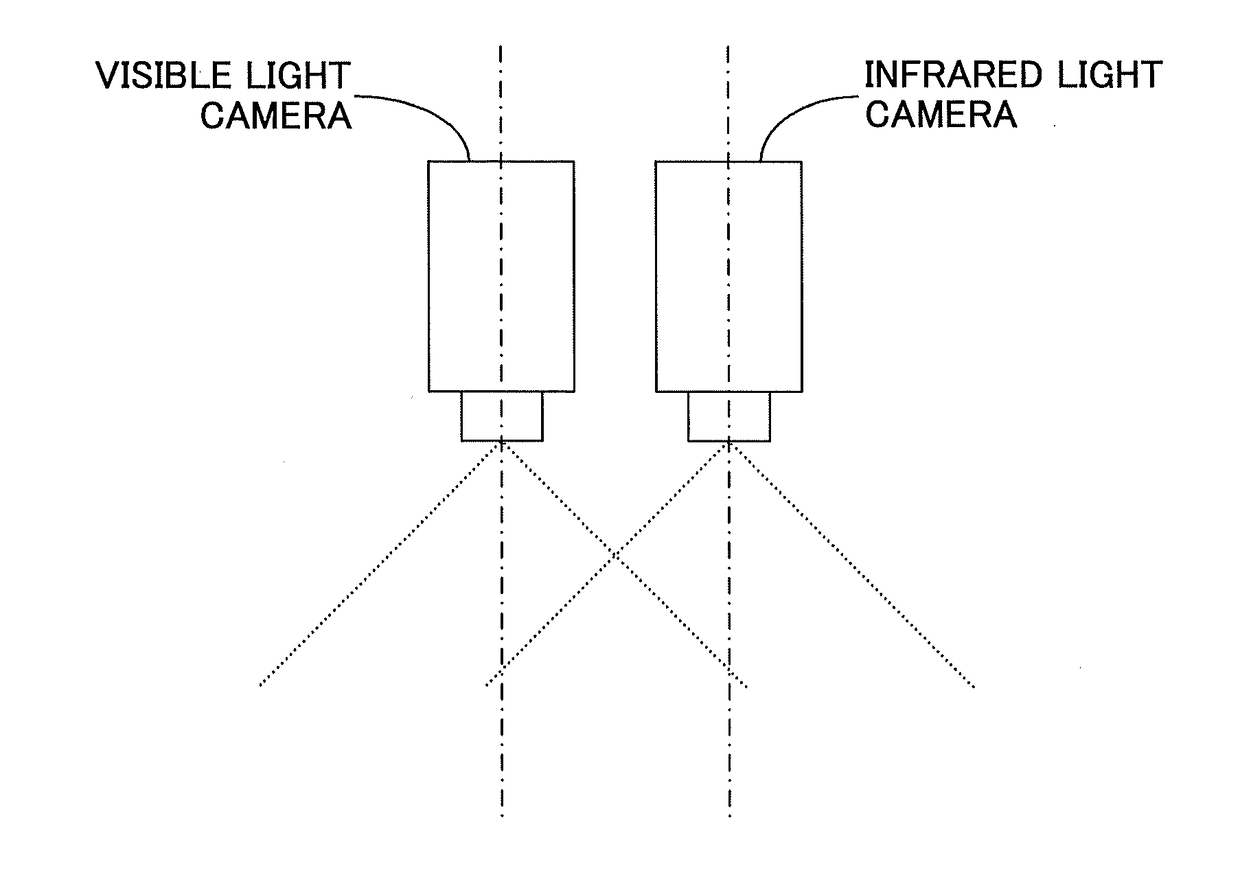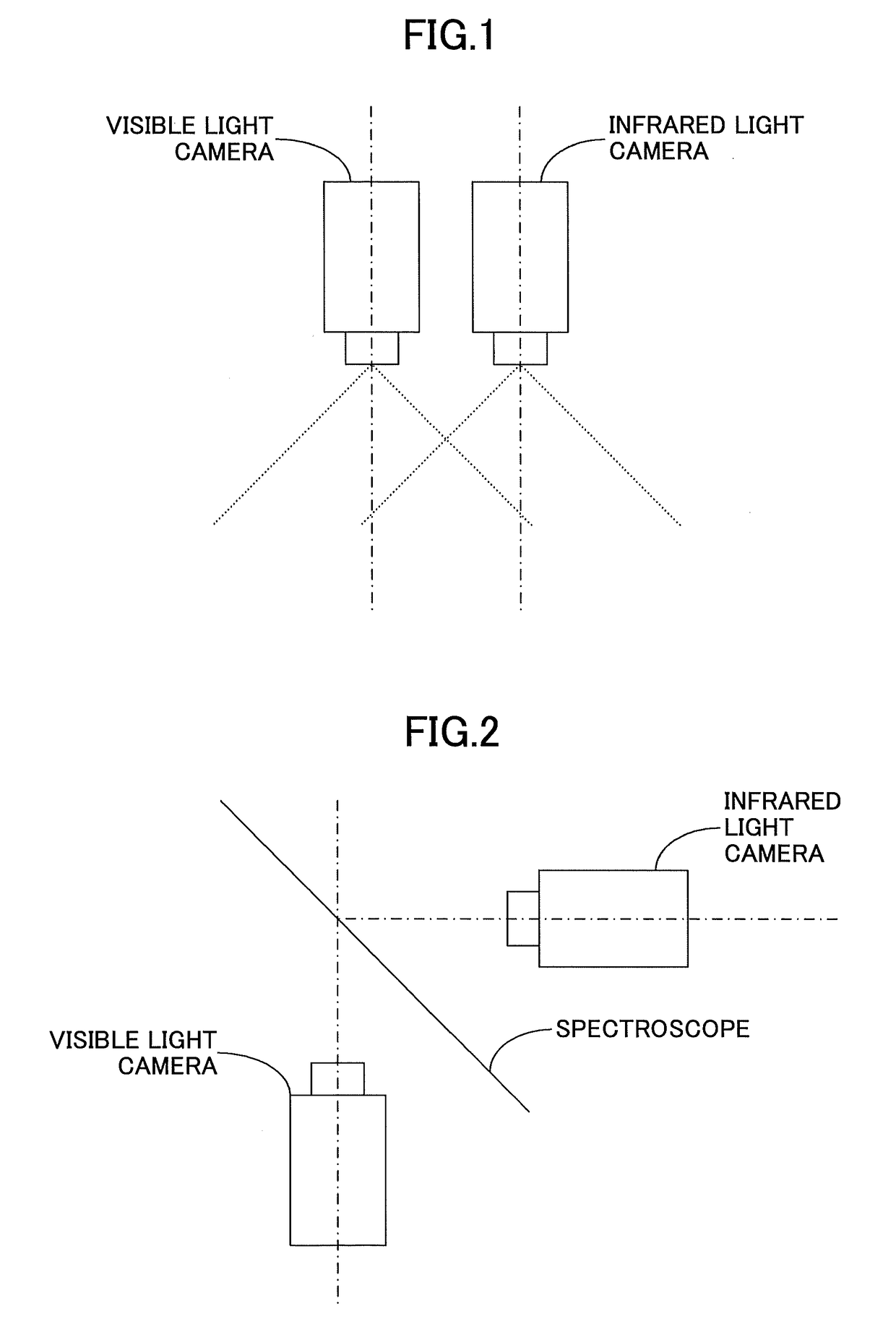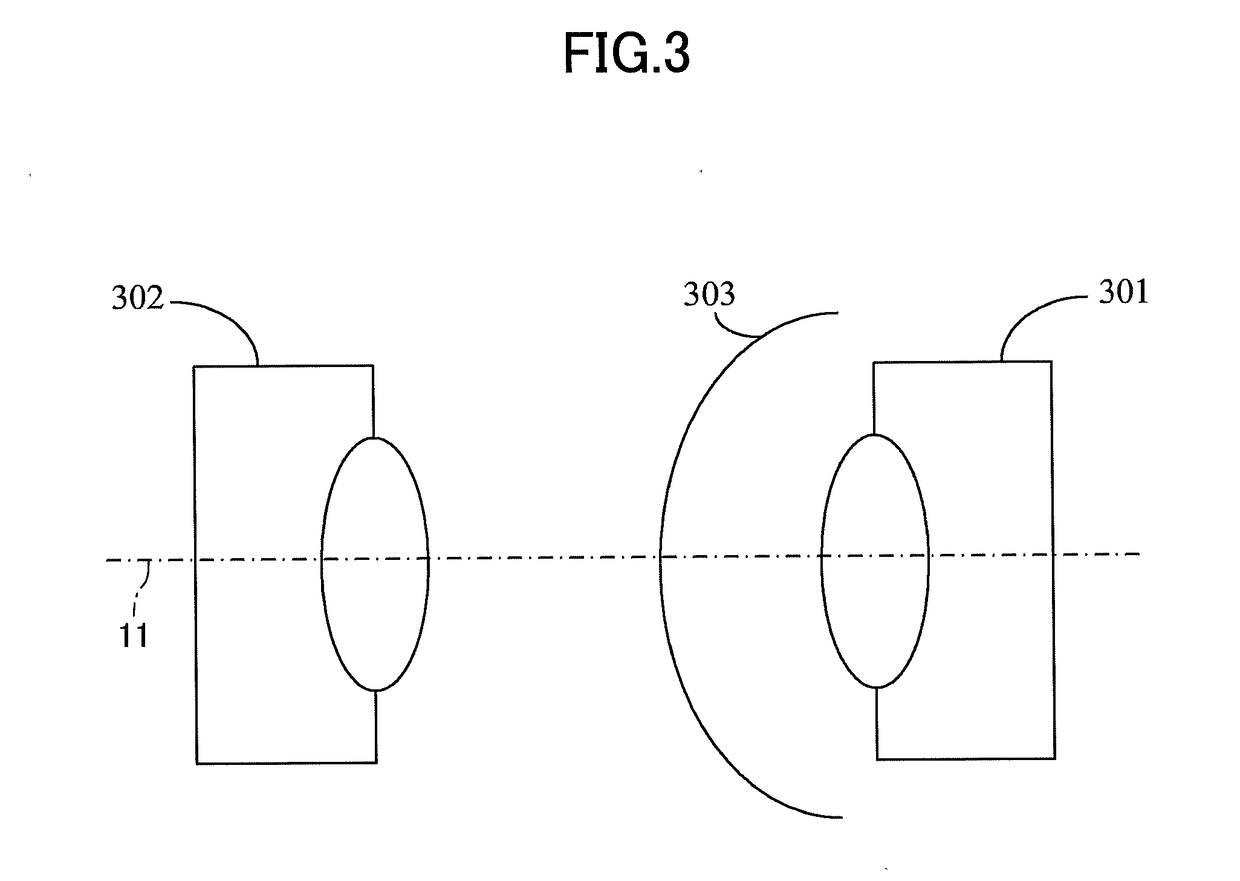Camera device and method for shooting light having at least two wavelength bands
- Summary
- Abstract
- Description
- Claims
- Application Information
AI Technical Summary
Benefits of technology
Problems solved by technology
Method used
Image
Examples
first embodiment
[0023]In this embodiment, a camera device for conducting a multimodal imaging process is provided.
[0024]FIG. 3 illustrates the fundamental structure of a camera device 300 according to this embodiment.
[0025]As shown in FIG. 3, the camera device 300 contains a first camera 301, a second camera 302, and a parabolic mirror 303.
[0026]The first camera 301 includes a first lens for receiving light having a first wavelength band. The second camera 302 contains a second lens for receiving light having a second wavelength band which is different from the first wavelength band. Unlike the basic structures of the conventional multimodal cameras as presented in FIGS. 1 and 2, in the camera device 300, the first lens of the first camera 301 is disposed facing the second lens of the second camera 302. Moreover, the parabolic mirror 303 is provided between the first lens and the second lens, and may let the light having the first wavelength band penetrate and reflect the light having the second wa...
second embodiment
[0069]A method of shooting light having at least two wavelength,bands is given in this embodiment.
[0070]FIG. 8 is a flowchart of the method according to this embodiment, which is applied to the camera device 300 according to the first embodiment.
[0071]As shown in FIG. 8, the method is inclusive of STEPS S801 to S802.
[0072]In STEP S801 of FIG. 8, incident light enters the parabolic mirror 303 which is arranged between the first lens of the first camera 301 and the second lens of the second camera 302 as indicated in FIG. 3.
[0073]In STEP S802 of FIG. 8, among the incident light, light having a first wavelength band penetrates through the parabolic mirror 303, and at the same time, light having a second wavelength band is reflected by the parabolic mirror 303.
[0074]In STEP S803 of FIG. 8, the first camera 301 containing the first lens receives the light having the first wavelength band.
[0075]In STEP S804 of FIG. 8, the second camera 302 including the second lens receives the light havi...
PUM
 Login to View More
Login to View More Abstract
Description
Claims
Application Information
 Login to View More
Login to View More - R&D
- Intellectual Property
- Life Sciences
- Materials
- Tech Scout
- Unparalleled Data Quality
- Higher Quality Content
- 60% Fewer Hallucinations
Browse by: Latest US Patents, China's latest patents, Technical Efficacy Thesaurus, Application Domain, Technology Topic, Popular Technical Reports.
© 2025 PatSnap. All rights reserved.Legal|Privacy policy|Modern Slavery Act Transparency Statement|Sitemap|About US| Contact US: help@patsnap.com



